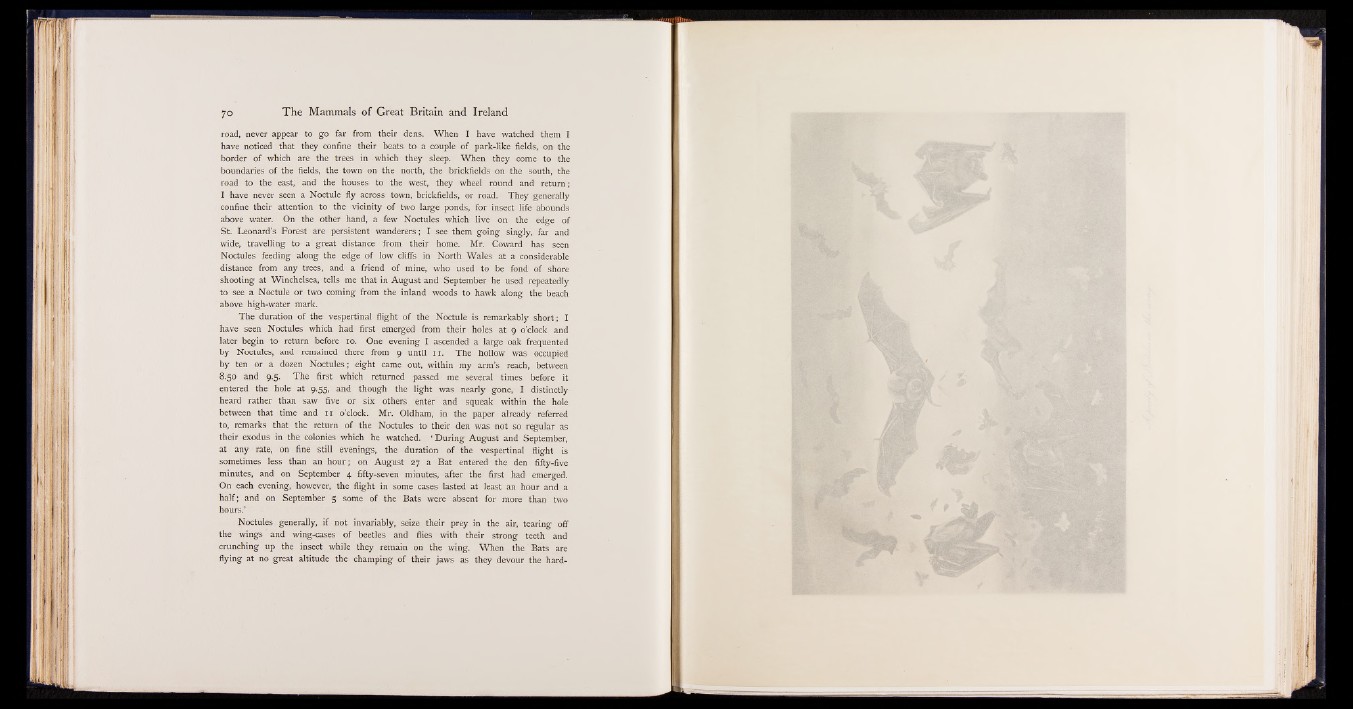
7 o The Mammals of Great Britain and Ireland
road, never appear to go far from their dens. When I have watched them I
have noticed that they confine their beats to a couple of park-like fields, on the
border of which are the trees in which they sleep. When they come to the
boundaries of the fields, the town on the north, the brickfields on the south, the
road to the east, and the houses to the west, they wheel round and return;
I have never seen a Noctule fly across town, brickfields, or road. They generally
confine their attention to the vicinity of two large ponds, for insect life abounds
above water. On the other hand, a few Noctules which live on the edge of
St. Leonard’s Forest are persistent wanderers; I see them going singly, far and
wide, travelling to a great distance from their home. Mr. Coward has seen
Noctules feeding along the edge of low cliffs in North Wales at a considerable
distance from any trees, and a friend of mine, who used to be fond of shore
shooting at Winchelsea, tells me that in August and September he used repeatedly
to see a Noctule or two coming from the inland woods to hawk along the beach
above high-water mark.
The duration of the vespertinal flight of the Noctule is remarkably short; I
have seen Noctules which had first emerged from their holes at 9 o’clock and
later begin to return before 10. One evening I ascended a large oak frequented
by Noctules, and remained there from 9 until 11. The hollow was occupied
by ten or a dozen Noctules; eight came out, within my arm’s reach, between
8.50 and 9.5. The first which returned passed me several times before it
entered the hole at 9.55, and though the light was nearly gone, I distinctly
heard rather than saw five or six others enter and squeak within the hole
between that time and 11 o’clock. Mr. Oldham, in the paper already referred
to, remarks that the return of the Noctules to their den was not so regular as
their exodus in the colonies which he watched. ‘ During August and September,
at any rate, on fine still evenings, the duration of the vespertinal flight is
sometimes less than an hour; on August 27 a Bat entered the den fifty-five
minutes, and on September 4 fifty-seven minutes, after the first had emerged.
On each evening, however, the flight in some cases lasted at least an hour and a
half; and on September 5 some of the Bats were absent for more than two
hours.’
Noctules generally, if not invariably, seize their prey in the air, tearing off
the wings and wing-cases of beetles and flies with their strong teeth and
crunching up the insect while they remain on the wing. When the Bats are
flying at no great altitude the champing of their jaws as they devour the hard